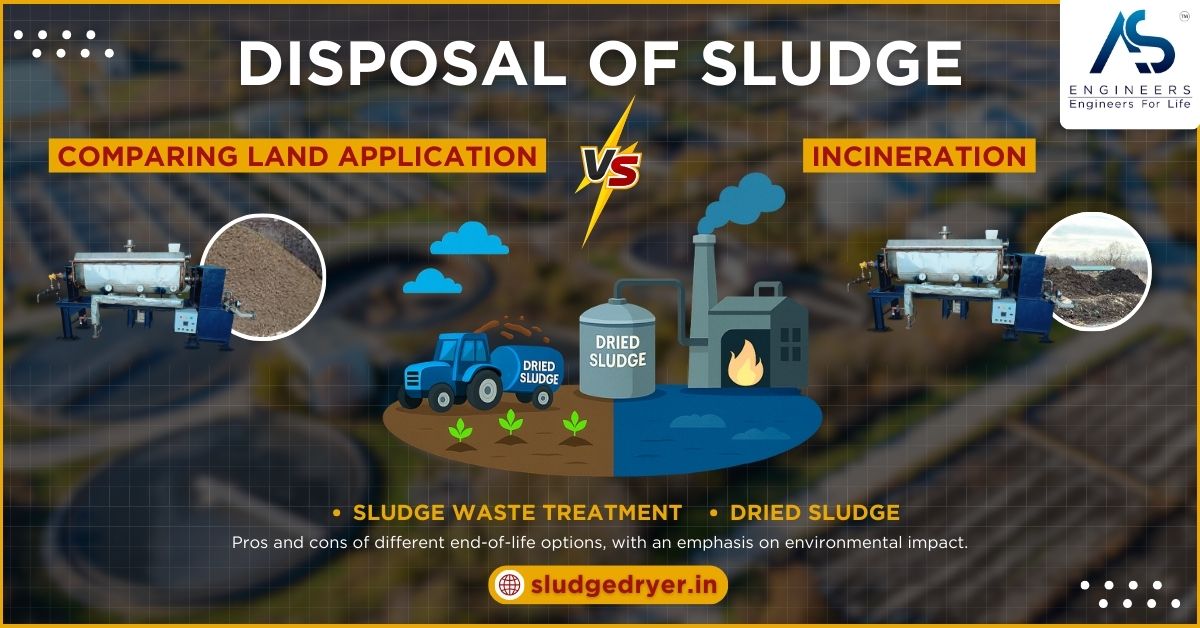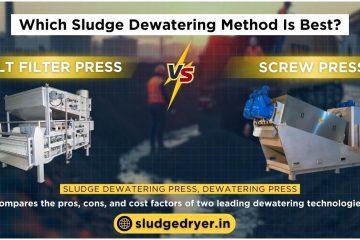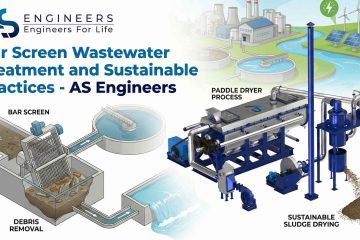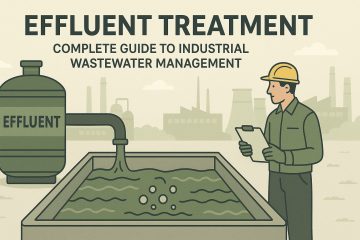Did you know that the United States alone produces approximately 7.1 million dry tons of sludge annually, enough to fill about 2,800 Olympic-sized swimming pools? The disposal of sludge has become one of the most significant waste management challenges facing municipalities and industries worldwide. As regulations tighten and environmental concerns grow, choosing the right disposal method has never been more crucial for both compliance and sustainability.
In this comprehensive guide, we’ll dive deep into the two most common sludge disposal methods—land application and incineration—analyzing their environmental impacts, costs, benefits, and limitations. Whether you’re a wastewater treatment professional, an environmental consultant, or a concerned citizen, this article will equip you with the knowledge to understand the complex decisions behind sludge waste treatment practices.
Table of contents
- Understanding Sludge: The Basics
- Land Application of Sludge: From Waste to Resource
- Incineration of Sludge: Thermal Destruction Approach
- Environmental Impact Comparison
- Decision Factors: When to Choose Each Method
- Emerging Technologies and Future Trends
- Case Studies: Success Stories and Lessons Learned
- Making the Right Choice for Your Community
- Conclusion: A Balanced Approach to Sludge Disposal
Understanding Sludge: The Basics
What Exactly Is Sludge?
Sludge is the semi-solid material that remains after wastewater treatment processes. It contains a mixture of water, organic matter, microorganisms, heavy metals, nutrients, and potential pathogens. Depending on its source, sludge may have varying characteristics:
- Municipal sludge: Generated from domestic sewage treatment
- Industrial sludge: Produced by manufacturing processes, often containing specific chemicals or contaminants
- Agricultural sludge: Derived from food processing or farming operations
Before any disposal method can be implemented, raw sludge typically undergoes various treatment processes to reduce volume, stabilize organic matter, and minimize pathogen content.
The Sludge Treatment Process
Before disposal, sludge goes through multiple treatment stages:
- Primary treatment: Physical separation of solids from liquids
- Thickening: Concentration of solids to reduce volume
- Stabilization: Biological or chemical processes to reduce pathogens and odor
- Conditioning: Chemical addition to improve dewatering efficiency
- Dewatering: Mechanical separation of water from solids (creating dried sludge)
- Further treatment: Additional processing specific to the chosen disposal method
Only after proper treatment can sludge be safely disposed of or beneficially reused. This brings us to our main topic: comparing land application and incineration.
Land Application of Sludge: From Waste to Resource
What Is Land Application?
Land application involves spreading treated sludge (often called biosolids when sufficiently processed) onto soil as a fertilizer or soil amendment. This practice has been implemented for decades across agricultural lands, forests, reclamation sites, and public parks.
Benefits of Land Application
The land application of properly treated sludge offers several compelling advantages:
Nutrient Recycling
Treated sludge is rich in essential plant nutrients, particularly:
- Nitrogen (N)
- Phosphorus (P)
- Potassium (K)
- Various micronutrients
These nutrients, when returned to soil, complete natural biogeochemical cycles rather than being lost in landfills or destroyed through incineration. A typical ton of biosolids can replace approximately $80-100 worth of commercial fertilizers.
Soil Quality Improvement
Beyond nutrients, sludge application enhances soil properties by:
- Increasing organic matter content
- Improving soil structure and water retention capacity
- Enhancing microbial activity
- Reducing soil erosion and runoff
- Promoting carbon sequestration
Studies have shown that regular applications of quality biosolids can increase crop yields by 10-30% compared to synthetic fertilizers alone.
Economic Benefits
Land application typically costs less than alternative disposal methods. Average costs range from $100-300 per dry ton, whereas incineration can cost $250-500 per dry ton. For municipalities and industries processing large volumes, these savings are substantial.
Challenges and Concerns with Land Application
Despite its benefits, land application faces significant challenges:
Potential Contaminants
Sludge may contain:
- Heavy metals (cadmium, lead, mercury)
- Pharmaceutical residues
- Personal care product chemicals
- Industrial chemicals
- Microplastics
- Pathogens (if inadequately treated)
While regulations limit allowable concentrations, accumulation over time remains a concern, particularly for metals that don’t degrade.
Public Perception and Opposition
Many communities oppose land application due to:
- Odor issues during and after application
- Fear of contamination of food crops
- Concerns about groundwater and surface water pollution
- Uncertainty about long-term environmental effects
- Lack of trust in regulatory oversight
This “NIMBY” (Not In My Back Yard) response has limited land application in many regions.
Weather and Seasonal Limitations
Land application faces practical constraints:
- Cannot be performed during heavy rainfall (runoff risk)
- Frozen ground prevents proper incorporation
- Application timing must align with crop planting schedules
- Storage facilities are needed during non-application periods
These limitations can increase operational complexity and costs.
Regulatory Compliance
Stringent regulations govern land application:
- EPA’s 40 CFR Part 503 regulations in the US
- Similar frameworks in other countries
- Regular testing and monitoring requirements
- Detailed record-keeping obligations
- Site permits and restrictions
Compliance requires significant administrative resources and technical expertise.
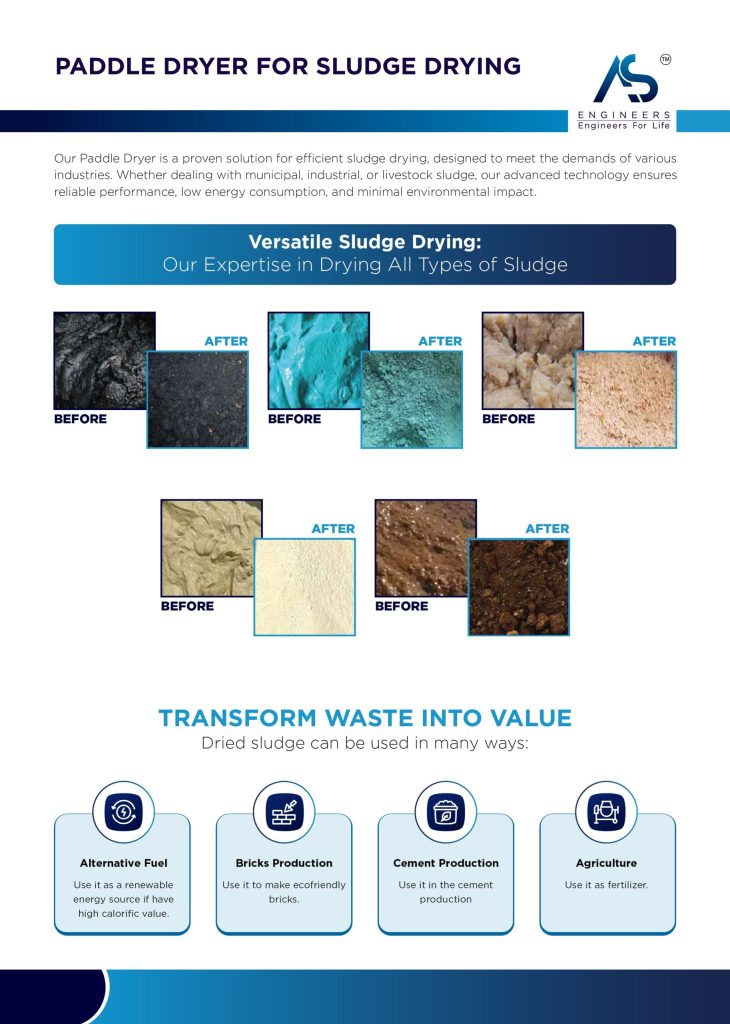
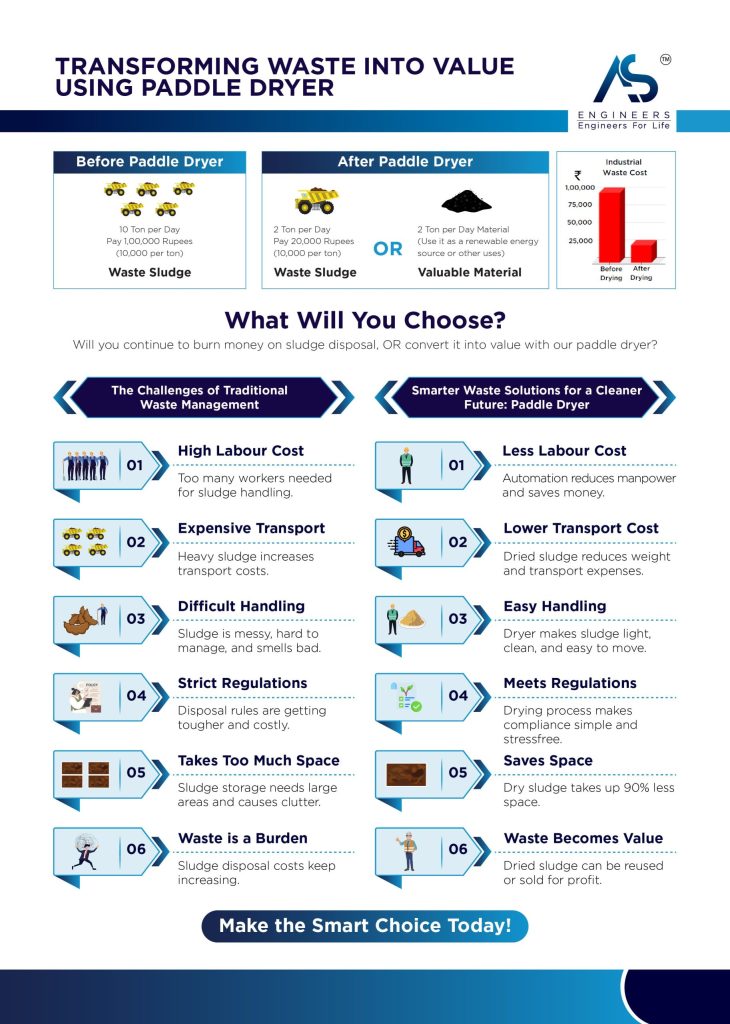
Incineration of Sludge: Thermal Destruction Approach
How Does Sludge Incineration Work?
Incineration involves the combustion of dried sludge at temperatures typically between 850-950°C (1560-1740°F). This thermal process destroys organic matter and pathogens while significantly reducing waste volume. Modern incinerators include multiple components:
- Feed systems for dewatered sludge
- Combustion chambers
- Air pollution control systems
- Heat recovery systems
- Ash handling equipment
Benefits of Sludge Incineration
Incineration offers several distinct advantages:
Complete Pathogen Destruction
High temperatures ensure 100% elimination of biological hazards, including:
- Bacteria
- Viruses
- Parasites
- Weed seeds
- Emerging contaminants (many pharmaceuticals and personal care products)
This makes incineration particularly valuable for sludge containing difficult-to-manage biological contaminants.
Volume Reduction
Incineration can reduce sludge volume by up to 90%, leaving only ash for disposal. For facilities with limited land availability, this dramatic reduction simplifies final disposal needs.
Energy Recovery Potential
Modern incineration facilities can be designed as waste-to-energy plants:
- Self-sustaining combustion once optimal temperature is reached
- Steam generation for electricity production
- District heating applications
- Potential for combined heat and power (CHP) systems
Some advanced facilities generate enough electricity to power their entire wastewater treatment operations.
Weather-Independent Operation
Unlike land application, incineration can operate year-round regardless of weather conditions, providing consistent disposal capacity without seasonal interruptions.
Drawbacks and Limitations of Incineration
Despite its advantages, incineration has significant drawbacks:
High Capital and Operating Costs
Incineration facilities require:
- Substantial initial investment ($20-100 million depending on capacity)
- Specialized technical operators
- Continuous maintenance
- Significant energy for startup and auxiliary fuel (if sludge isn’t dry enough)
- Complex air pollution control systems
These costs can be prohibitive for smaller communities or facilities.
Air Emission Concerns
Even with advanced pollution controls, incineration produces:
- Greenhouse gases (CO2)
- Nitrogen oxides (NOx)
- Sulfur dioxide (SO2)
- Particulate matter
- Potential trace amounts of dioxins and furans
- Mercury and other volatile metals
These emissions contribute to climate change and may affect local air quality.
Ash Disposal Requirements
Incinerator ash requires proper management:
- May be classified as hazardous waste if containing leachable metals
- Requires landfill disposal or specialized treatment
- Represents loss of potentially valuable nutrients
- Continues to require long-term management
The ash typically represents 10-20% of the original sludge volume but may contain concentrated contaminants.
Energy Intensity
The drying process required before efficient incineration consumes significant energy:
- Mechanical dewatering can only achieve about 20-30% solids content
- Thermal drying is needed to reach 40-50% solids for autothermal combustion
- This drying process can consume 1,500-3,000 kWh per ton of water evaporated
This energy consumption impacts both operating costs and environmental footprint.
Environmental Impact Comparison
Carbon Footprint
The carbon implications of each method differ significantly:
Land Application:
- Lower direct carbon emissions
- Potential carbon sequestration in soil
- Transportation emissions from hauling sludge to application sites
- Potential release of nitrous oxide (a potent greenhouse gas) from soil
- Carbon footprint: 0.1-0.3 tons CO2 equivalent per dry ton of sludge
Incineration:
- Higher direct carbon emissions from combustion
- Energy recovery can offset some emissions
- Reduced transportation emissions compared to land application
- Carbon footprint: 0.5-1.0 tons CO2 equivalent per dry ton of sludge (without energy recovery)
Water Quality Effects
Both methods impact water resources differently:
Land Application:
- Potential leaching of nitrates into groundwater
- Possible runoff of phosphorus contributing to eutrophication
- Risk of pathogen contamination if improperly managed
- Pharmaceuticals and personal care products entering watersheds
Incineration:
- Minimal direct water impacts
- Wet scrubber systems generate wastewater requiring treatment
- Ash disposal may pose leaching concerns in landfills
- Overall lower risk to water resources when properly operated
Soil Health Impacts
The effects on soil systems vary dramatically:
Land Application:
- Builds organic matter in soil
- Improves soil structure and water retention
- Potential accumulation of heavy metals over decades
- Risk of soil contamination from industrial pollutants
Incineration:
- No soil benefits
- No opportunity for nutrient recycling
- Avoids potential soil contamination issues
- Represents a broken nutrient cycle
Resource Recovery Comparison
The circular economy potential differs between methods:
Land Application:
- Recovers nutrients (particularly phosphorus, a finite resource)
- Returns organic matter to soil
- Maintains nutrient cycles
- Reduces need for synthetic fertilizer production
Incineration:
- Potential energy recovery
- Possible phosphorus recovery from ash (emerging technology)
- Destroys organic matter
- Breaks nutrient cycles
Decision Factors: When to Choose Each Method
Site-Specific Considerations
Several local factors influence which disposal method makes the most sense:
Land Availability
Regions with abundant agricultural land and low population density typically favor land application. Urban areas with limited land resources often turn to incineration out of necessity.
Climate and Seasonal Patterns
Areas with year-round growing seasons and moderate precipitation offer ideal conditions for land application. Regions with harsh winters, frequent precipitation, or drought conditions may find incineration more practical.
Local Agricultural Needs
Communities surrounded by nutrient-hungry crops benefit more from land application. Areas with limited agriculture may find less value in biosolids recycling.
Energy Costs and Needs
Locations with high energy costs may benefit from the energy recovery potential of incineration. Regions with low energy costs might find land application more economically advantageous.
Sludge Characteristics
The nature of the sludge itself influences disposal decisions:
Contaminant Profile
Sludge with elevated industrial contaminants may be unsuitable for land application. Highly contaminated sludge often necessitates incineration to destroy or immobilize hazardous components.
Treatment Level
Class A biosolids (meeting strictest pathogen reduction standards) enable more land application options. Less treated sludge may require incineration for safe disposal.
Volume Generated
Larger facilities often find economies of scale with incineration. Smaller facilities may find land application more cost-effective.
Dewatering Capability
Facilities achieving higher solids content through efficient dewatering make incineration more energy-efficient. Limited dewatering capability favors land application.
Regulatory Environment
The regulatory landscape significantly impacts disposal choices:
Local Regulations
Some jurisdictions have banned or severely restricted land application. Others have imposed strict emissions limits on incineration.
Public Acceptance
Community opposition to either method can be a decisive factor regardless of technical merits. Public education and engagement are essential for implementing any disposal strategy.
Long-term Liability
Land application creates potential long-term liability for soil contamination. Incineration shifts liability concerns to air emissions and ash disposal.
Emerging Technologies and Future Trends
The field of sludge waste treatment continues to evolve with promising innovations:
Advanced Land Application Methods
New approaches are addressing traditional concerns:
- Precision agriculture techniques for optimal biosolids application
- Real-time monitoring of soil and groundwater impacts
- Enhanced stabilization processes for odor reduction
- Biochar production from sludge for more stable carbon sequestration
- Targeted extraction of contaminants before land application
Next-Generation Thermal Processes
Beyond conventional incineration:
- Gasification technologies that create syngas rather than direct combustion
- Pyrolysis systems operating in oxygen-free environments
- Supercritical water oxidation for wet sludge processing
- Plasma arc treatment for complete destruction of organic contaminants
- Enhanced phosphorus recovery from incineration ash
Hybrid and Alternative Approaches
Innovative combinations and new methods:
- Composting with other organic wastes to create marketable soil products
- Anaerobic digestion with biogas capture before final disposal
- Hydrothermal liquefaction to produce biocrude oil
- Deep well injection (in limited appropriate geological settings)
- Constructed wetlands for sludge mineralization
Resource Recovery Focus
The future emphasizes extracting value from sludge:
- Phosphorus mining from sludge (essential as global reserves diminish)
- Rare earth element recovery from certain industrial sludges
- Bioplastic production from bacterial polyhydroxyalkanoates in sludge
- Building material incorporation (bricks, ceramics, lightweight aggregates)
- Protein recovery for animal feed or industrial uses
Case Studies: Success Stories and Lessons Learned
King County, Washington: Successful Land Application Program
King County has operated one of the nation’s most successful biosolids recycling programs for over 40 years:
- Produces LoopⓇ biosolids used by commercial forestry operations and farms
- Rigorous testing program exceeding federal requirements
- University research partnerships demonstrating long-term safety
- Strong community education program
- Key success factors: transparency, consistent quality control, and stakeholder engagement
Zürich, Switzerland: Model Incineration Facility
The Werdhölzli wastewater treatment plant demonstrates state-of-the-art thermal treatment:
- Treats sludge from 670,000 residents
- Recovers heat for district heating system serving nearby neighborhoods
- Implemented phosphorus recovery from ash
- Meets stringent Swiss air quality standards
- Key success factors: integration with energy systems and commitment to resource recovery
Toronto, Canada: Hybrid Approach
Toronto’s Ashbridges Bay Treatment Plant illustrates a flexible strategy:
- Uses multiple disposal pathways based on season and need
- Anaerobic digestion reduces volume and generates biogas
- Incineration handles winter capacity when land application isn’t feasible
- Land application utilized during growing season
- Key success factors: operational flexibility and diversified disposal options
Making the Right Choice for Your Community
Conducting a Proper Assessment
Before deciding on a sludge disposal method, consider:
- Full life-cycle assessment of environmental impacts
- Long-term economic analysis including capital, operating, and hidden costs
- Stakeholder engagement to understand community priorities and concerns
- Regulatory compliance review for current and anticipated future requirements
- Technical feasibility given your facility’s capabilities and limitations
Implementing a Successful Program
Regardless of the chosen method:
- Invest in monitoring to verify environmental performance
- Maintain transparency with stakeholders and the public
- Consider a diversified approach rather than relying on a single method
- Plan for technology advances with flexible infrastructure
- Focus on continuous improvement rather than merely meeting minimum standards
Conclusion: A Balanced Approach to Sludge Disposal
The debate between land application and incineration for disposal of sludge isn’t simply about choosing a winner. Each method offers distinct advantages and faces significant limitations. The most sustainable approach often involves a tailored combination of methods based on local conditions, sludge characteristics, and community values.
What’s clear is that proper sludge waste treatment and management will remain an essential environmental challenge for decades to come. As populations grow and regulations tighten, the demand for innovative, efficient, and environmentally sound solutions will only increase. Whether through returning nutrients to the soil or capturing energy through thermal processes, the focus must remain on maximizing resource recovery while minimizing environmental impacts.
The future of sludge management lies not in dogmatic adherence to a single approach, but in thoughtful integration of multiple technologies, careful monitoring of outcomes, and continuous improvement of processes. By approaching this challenge with scientific rigor and open minds, we can transform what was once seen merely as waste into valuable resources for a more sustainable future.

